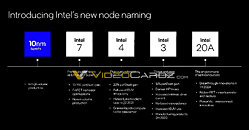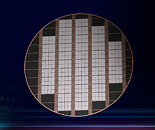
Intel Reports Third-Quarter 2022 Financial Results
Intel Corporation today reported third-quarter 2022 financial results. "Despite the worsening economic conditions, we delivered solid results and made significant progress with our product and process execution during the quarter," said Pat Gelsinger, Intel CEO. "To position ourselves for this business cycle, we are aggressively addressing costs and driving efficiencies across the business to accelerate our IDM 2.0 flywheel for the digital future."
"As we usher in the next phase of IDM 2.0, we are focused on embracing an internal foundry model to allow our manufacturing group and business units to be more agile, make better decisions and establish a leadership cost structure," said David Zinsner, Intel CFO. "We remain committed to the strategy and long-term financial model communicated at our Investor Meeting."
"As we usher in the next phase of IDM 2.0, we are focused on embracing an internal foundry model to allow our manufacturing group and business units to be more agile, make better decisions and establish a leadership cost structure," said David Zinsner, Intel CFO. "We remain committed to the strategy and long-term financial model communicated at our Investor Meeting."








































